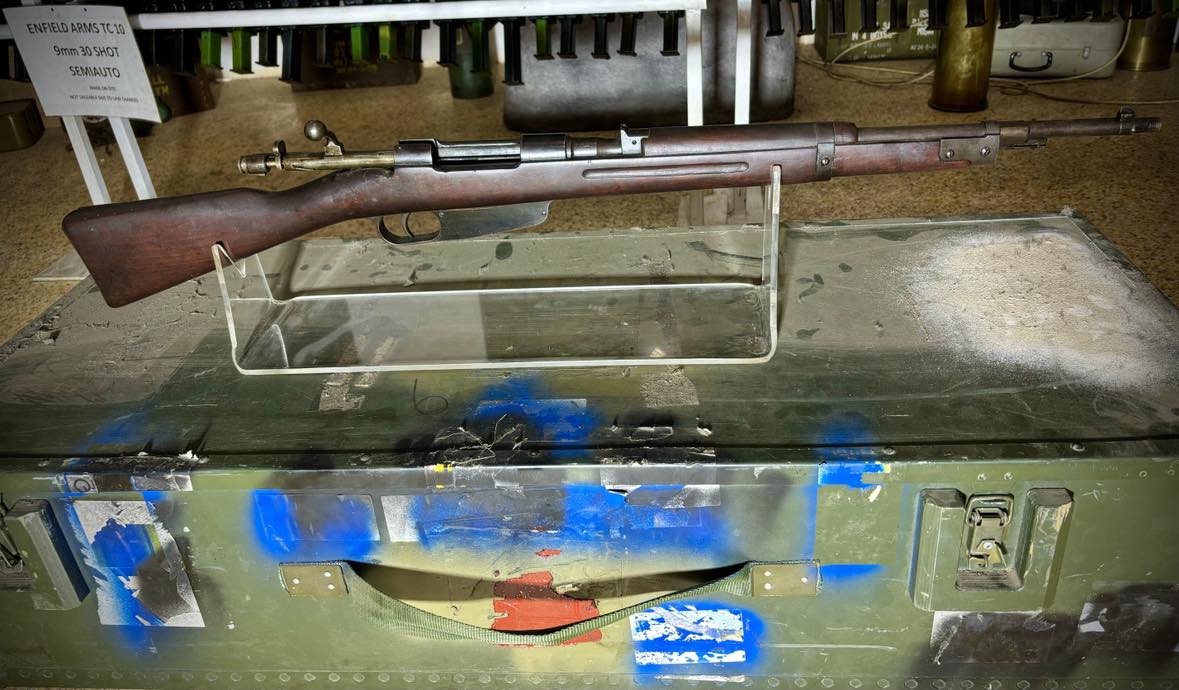
6.5 Carcano M91/38
For most American readers, the M 91/38 short rifle with the serial number C2766, produced in 1940 in the Terni Arsenal, and chambered for the 6.5x52 Carcano, would be the most famous Carcano, since it was supposedly used by Lee Harvey Oswald to assassinate President John F. Kennedy. Had Oswald not opted to make that $20 purchase, the Carcano rifle would likely be a footnote of military rifles today overshadowed by the Mauser, Lee-Enfield, and Mosin-Nagant. Instead, it became infamous through Oswald’s actions, when he fired the rifle from the Texas School Book Depository at approximately 13:30 pm CST. The arguments over this conspiracy are infamous and can be debated till this day but lets talk about the rifle.
The Italian Carcano had its baptism of fire in the First Italo-Ethiopian War (1895-96)—which proved to be an unmitigated disaster for Rome. It was subsequently used in the 1901 Boxer Rebellion in China and then in the Italo-Turkish War (1911-12). The Italians made most of their Carcanos, over two and a half million, between 1893 and the end of World War I and used them for over half a century with no significant changes aside from sights, stocks and barrel length.
The Carcano’s design simplicity is immediately apparent in its combined trigger, sear, ejector, bolt stop and bolt release mechanism. With no screws, it is held in place by a single pin you can usually pull out with your thumbnail. When the action is in the stock, the wood keeps it from falling out. One of the solutions the Italians utilized in the M91 was gain-twist rifling. This was a top-secret feature at the time. The twist started out slow at the breech end, to ease the bullet into rotation, and steadily increased the twist as it moved toward the muzzle. It was a clever solution and it certainly helped at the start, but improvements in the ammunition probably made it irrelevant eventually and later variants of the M91 had conventional twist rifling. The Carcano was also easier to load than a stripper-clip-charged gun thanks to its modified Steyr-Mannlicher clip-fed magazine that Italy purchased the patent rights to manufacture. The disposable clip, made of thin gauge brass or steel, was inserted through the open action as a single unit until the clip release latch in the trigger guard engaged a notch on the spine of the clip. The latch held the clip and bullets in the action until the last round was fired. With no more cartridges, the empty clip was free to drop through the opening in the bottom of the magazine. The Italians modified the clip design so it could be loaded regardless of orientation, as long as the bullet’s pointy end was toward the enemy.
#firearmmuseum #gunmuseum #carcano #kennedy #italiangun #ww1 #ww2 #gympie #gympieregion













